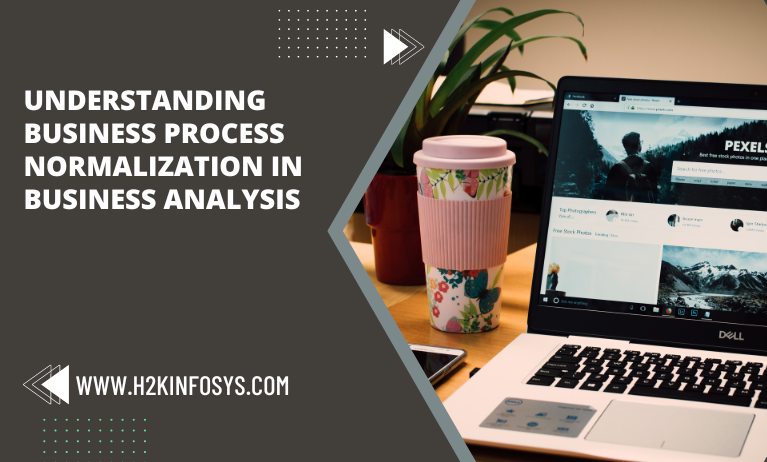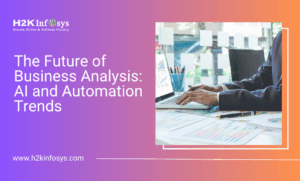Business analysts, process analysts, systems analysts, and process owners can more easily elicit, perceive, clearly define, and model sound, contemporary business process architectures and workflow configurations by using business process normalization. Their efforts for process management, digital transformation, and regulatory compliance all benefit from proficiency with this analysis technique.
Business analysts, process analysts, and the stakeholders in their projects have been attempting to categorize business processes for many years. It has been claimed that business processes convert inputs into outputs. They are breakable into smaller pieces. They begin. These “flows.” They come to an end. They receive patrons. They are able to go across organizational borders. They are automatable. They may also be manual. They can be measured. Even while each of those claims may be true, none of them are adequate to elicit, perceive, or otherwise influence and produce high-quality business process structures.
You have to know what Business Analysis entails before you can understand Business Process Normalization. You can check out a good online business analysis training program for more vital knowledge.
Business process normalization is an analysis technique that examines a potential business process’s contextual meaning in light of the four principles of the Universal Business Process Definition.
To normalize a business process or workflow, a process analyst or business analyst does not necessarily need to ask many questions. They simply need to persistently chase the four, occasionally elusive, solutions and ask a limited number of focused queries (four, to be exact). The answers to the normalization questions will either confirm or reorganize the presumed fundamental structure of a business process. In order to adequately respond to the four process-defining tests, the analyst will need to extract additional information (via documentation reviews, interviews, workshops, and mining).
The procedure has been normalized once all four tests have been satisfactorily answered, Uncertainties have been cleared up, and It has been established that a sound, core business process or workflow structure exists. The four test results can then be used to create a clear, unambiguous, contextually accurate process definition. No two processes within the same domain of analysis will most likely have the same definition. The defining structure of the normalized process will serve as the basis for a high-quality, contextually correct business process model, configurable business procedure, or automated workflow.
Benefits of Business Process Normalization.
The four-part Universal Business Process Definition’s rules and the Business Process Normalization technique have the following advantages: they are current, efficient, they improve contextual quality, they reduce redundant and non-value-adding tasks, and they are both effective, it improves the potential for reusable business services and it aids in well-written process descriptions.
1.Relevant for Modern Business Structures and Technologies.
Event-driven and outcome-oriented processes are those that have been normalized in accordance with the Universal Business Process Definition. They are designed to be easily applied across geographic and organizational barriers in businesses. They are simple to represent using contemporary notations, such as BPMN. Both conventional sequential procedures and workflow designs as well as contemporary networks of collaborative services (such SaaS services in the cloud) can easily translate them.
2.Efficient.
Asking the proper questions rather than a lot of them is more successful when identifying and establishing business processes among a group of stakeholders. Four straightforward questions form the framework for the elicitation and normalization agenda in the Universal Business Process Definition. The process modeling work comes down to intentionally pursuing and getting consensus to the questions’ answers among the right business stakeholders.
3.Boosts Contextual Quality.
It is insufficient to assume that everyone would comprehend the same meaning when a business process’ name is used. The contextual knowledge and general agreement about a business process among readers of the Universal Business Process Definition become unmistakable when that definition is normalized in accordance with its four guidelines.
4.Minimizes redundant processes.
Different processes that carry out the same task may exist within an organization. Just their names are different. Any two candidate business processes that, as a result of process normalization, provide identical responses to the four tests of business process normalization are aliases of one another. Two different names for the same procedure are legitimately used. They need to be carefully reexamined to determine if one of them can eventually be safely deleted.
5.Minimizes Non-value-adding Activities.
Instead of doing what needs to be done, people, departments, and businesses frequently propose or carry out tasks that they already undertake. It may not be evident how valuable their efforts are in reaching a process’ or workflow desired business outcome. The Universal Business Process Definition states that a process encompasses the actions that result in the process’ anticipated conclusion. Candidate activities should be carefully reexamined to determine whether they should be eliminated or whether they should be included in another process if they are not required to produce the process’s outcome.
6.Supports the writing of effective business process descriptions.
In order to provide process descriptions that are consistently written, unambiguously stated, and contextually meaningful, the four business process normalization questions can be answered in a few straightforward phrases.
7.Improves Potential for Reusable Services.
Activities are seen and defined as event-driven and outcome-oriented processes in accordance with the Universal Business Process Definition. Each is limited and defined in part by the originating event and anticipated result. Activities have the potential to be recognized as reusable services that may be reused in more than one bigger process due to their event- and outcome-oriented structure.
Conclusion
In the modern world, business analysis has grown to rely heavily on the idea of business process normalization. Enrolling in a reputable online business analysis certification school can help you learn more about it.





























